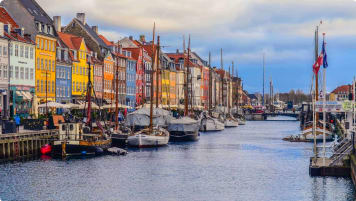Highlights of Denmark | Amalienborg Palace
In Copenhagen, one will find Amalienborg, the home of the Danish royal family. Consisting of four identical 18th-century palaces with rococo interiors around an octagonal courtyard, Amalienborg has been home to Danish royals since 1784 and continues to be the queen's winter residence.
17 Jan 20 · 5 mins read

Highlights of Denmark | Amalienborg Palace
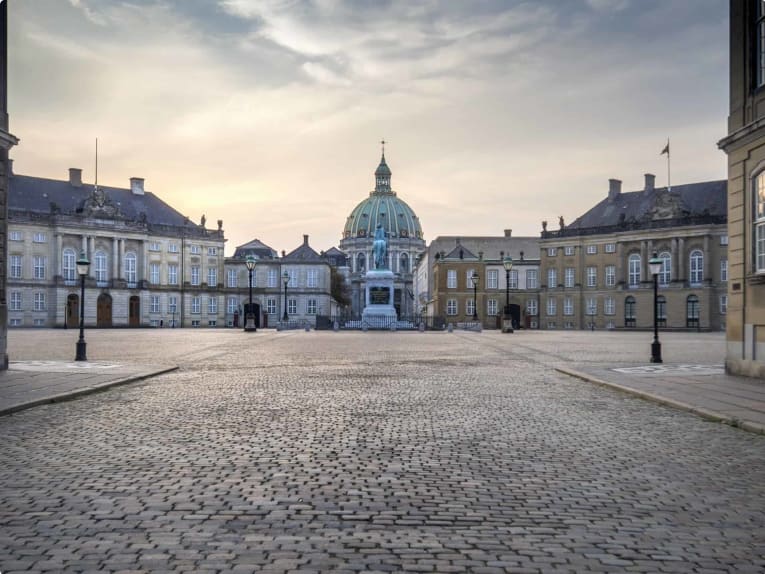
In Copenhagen, one will find Amalienborg, the home of the Danish royal family. Consisting of four identical 18th-century palaces with rococo interiors around an octagonal courtyard, Amalienborg has been home to Danish royals since 1784 and continues to be the queen’s winter residence. While the palace is technically not open to the public, the Christian VIII palace sits across from the royal’s wing is home to the Amalienborg Museum. The museum displays part of the Royal Collection (the first is at Rosenborg Slot) and showcases the lives and experiences of the Danish royals between 1863 and 1947. The exhibition includes royal heirlooms, family photographs and antiques.
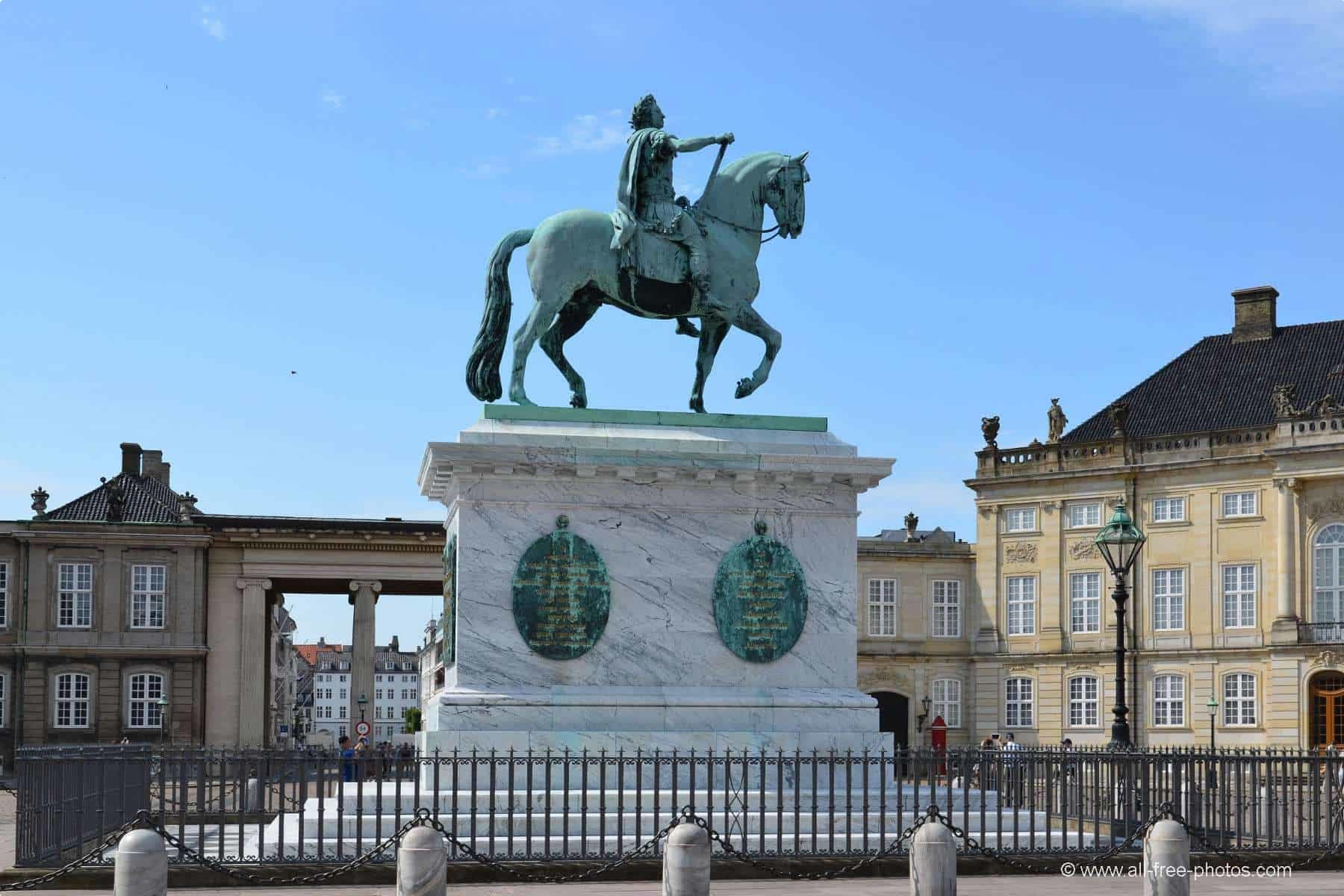
In the centre of the courtyard is a monumental equestrian statue of King Frederick V, the king of Denmark–Norway (r. 1746-1766) and founder of Amalienborg. The statue was built by the French sculptor Jacques François Joseph Saly and is said to have cost as much as all the palatial buildings combined.
Everyday at noon, when the queen is staying at the palace, visitors can enjoy the changing of the guard. Amalienborg is renowned for its Royal Guard, called Den Kongelige Livgarde. For the guard change, the Royal Guard marchesf from their barracks in 100 Gothersgade by Rosenborg Castle through the streets of Copenhagen and finish at Amalienborg.
The History of Amalienborg

Amalienborg is named after the summer palace Sophie Amalienborg, built between 1667-73 for Queen Sophie Amalie, the wife of Frederick III. Sophie Amalienborg was on the site of the current Amalienborg and was an impressive Italian-inspired villa built next to an opera house. After Queen Sophie’s death, her son King Christian V took over the palace and he used the opera house and palace as the venue for his 44th birthday celebrations in 1689. Tragically, during the presentation of a German opera in the opera house, a stage decoration caught fire, causing the theatre and palace to burn down and the deaths of around 180 people.
Amalienborg was originally built for four noble families in the 1750s, designed and constructed by the Danish architect Nicolai Eigtved. In 1794, following a fire at the Christiansborg Palace, the Danish royal family found itself homeless. At the time, the mansions of Amalienborg remained empty for large stretches of the year because the nobility who owned them were often travelling. As a result, the noblemen were happy to part with their part-time homes in exchange for a promotion, and the royal family acquired Amalienborg as their residence.

The four palaces that make up Amalienborg are:
- Christian VII’s Palace, originally known as Moltke’s Palace, built for Lord High Steward Adam Gottlob Moltke. This was a royal residence of King Christian VII, whose reign was marked by mental illness. It was the first palace purchased by the royal family and was used by Frederick VI for his Royal Household after Christian VII’s death. The palace is occasionally open to the general public.
- Christian VIII’s Palace, originally known as Levetzau’s Palace, built for Privy Councillor Count Christian Frederik Levetzau in 1750–60. It was bought by the King’s half-brother Frederick in 1794 and the architect Nikolai Abildgaard modernised the interiors. The palace was named after Frederick’s son, Christian VIII, who grew up in the palace and became king in 1839. Christian VIII’s Palace was the home of Crown Prince Frederik until 2004. The palace was updated to include the museum, which features private royal apartments from 1863 to 1947 including original fittings and furnishings.
- Frederick VIII’s Palace, originally known as Brockdorff’s Palace, by Baron Joachim Brockdorff and originally used as a naval academy. It became the residence of Frederick VII in 1828 and in 1869, it became the home of Frederick VIII. It was the home of Queen Dowager Ingrid until her death in 2000 and since then has been renovated and become the home of Crown Prince Frederik and the Crown Princess Mary.
- Christian IX’s Palace, originally known as Schack’s Palace, built for Privy Councillor Severin Løvenskjold. It was taken over by the regent, then Crown Prince Frederick, in 1794 and remained his home until his death in 1839. It was then used by both the Supreme Court and the Ministry of Foreign Affairs. It was later the home of King Christian IX until his death in 1906 and remained untouched afterwards until 1948. In the 60’s it was renovated for the successor to the throne, Crown Princess Margrethe and has remained the home of the royal couple since then.
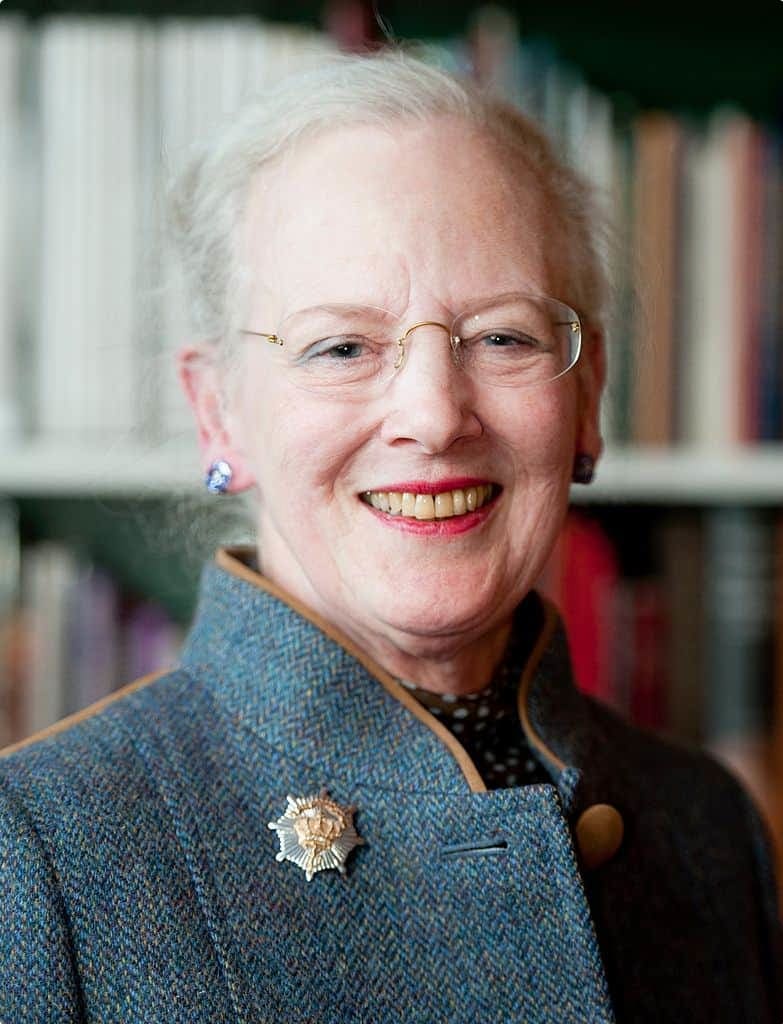
During World War II, Amalienborg Palace Square was the scene of some of the heaviest fighting in Denmark, both during 1940 when Denmark was invaded and in 1944 when the Germans began rounding up the Danish police force to send them to concentration camps. The palace square became the site of one of the few Danish military victories during World War II when 20 German soldiers were killed attempting to round up the small police force protecting the king. Today, you can still see the bullet holes in the walls of some of the buildings in the square.
Amalienborg was originally seen as a temporary solution to the royal family’s homelessness following the Christiansborg Palace fire but even though Christiansborg was rebuilt, Amalienborg functioned excellently as a residence and the rebuilding of Christiansborg could not tempt them back. Amalienborg has now been a royal residence for more than 200 years and it has been the tradition that the monarch as lived in one palace and the the heir to the throne lives in another. It is still used this way today, with Queen Margrethe living in Christian IX’s Palace and Crown Prince Frederick living in Frederick VIII’s Palace.
Visiting Amalienborg
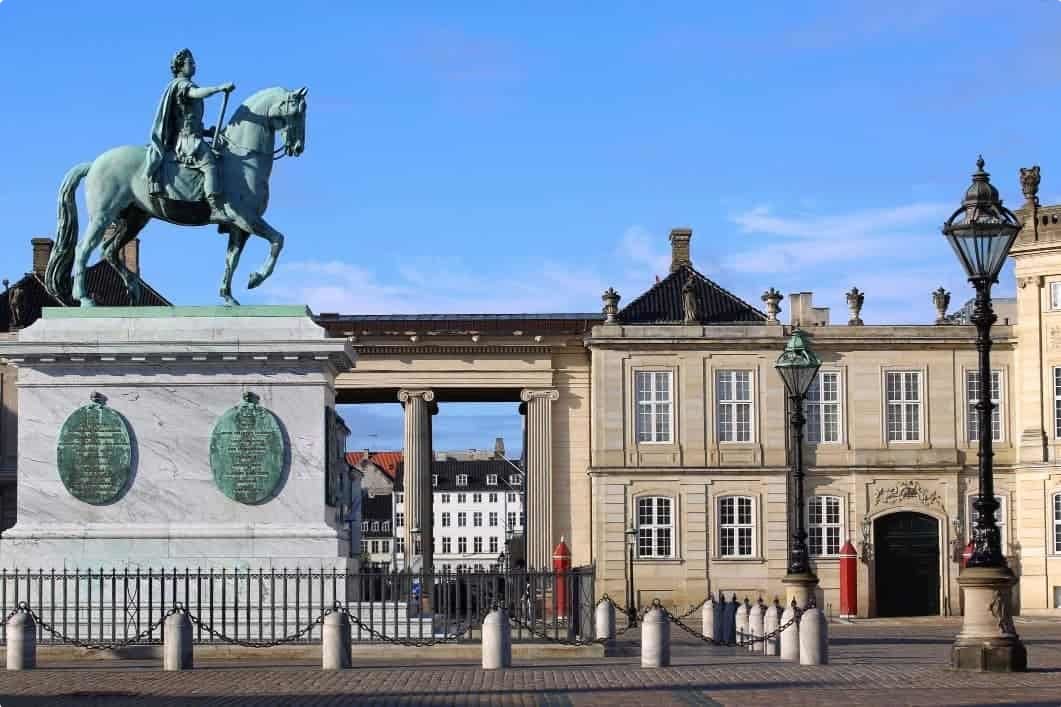
Amalienborg is a five to ten minute walk from Nyhavn, a 17th-century waterfront, canal and entertainment district of Copenhagen, Denmark and a fifteen-minute walk from the Little Mermaid statue. In summer (June, July and August), there is daily entry to the Royal Representation Rooms, the Gala Hall and other state rooms that are still used for royal functions. During the rest of the years, these rooms are only open on Saturdays. When the Queen is in residence, a Danish flag is raised at the palace and on April 16, when the Queen celebrates her birthday, she steps out onto the balcony with the rest of the Royal family.
Next to Amalienborg, you will find the Amalie Garden, also known as Amaliehaven. Established in 1983, the beautiful Amaliehaven was given as a gift to the city of Copenhagen by the A.P. Møller and Chastine McKinney Møller Foundation, owned by Danish shipping magnate Mærsk Mc-Kinney Møller. The two-level garden features sculptures and a central fountain designed by Italian sculptor Arnaldo Pomodoro.
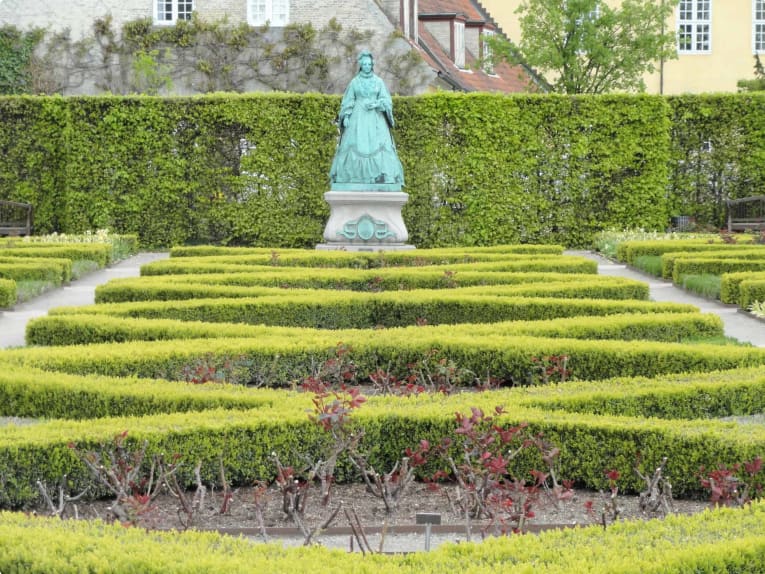
Møller also donated the Copenhagen Opera House, one of the most expensive opera houses ever built, to the Danish state in 2000 and it is located directly across the harbour from Amalienborg Palace.
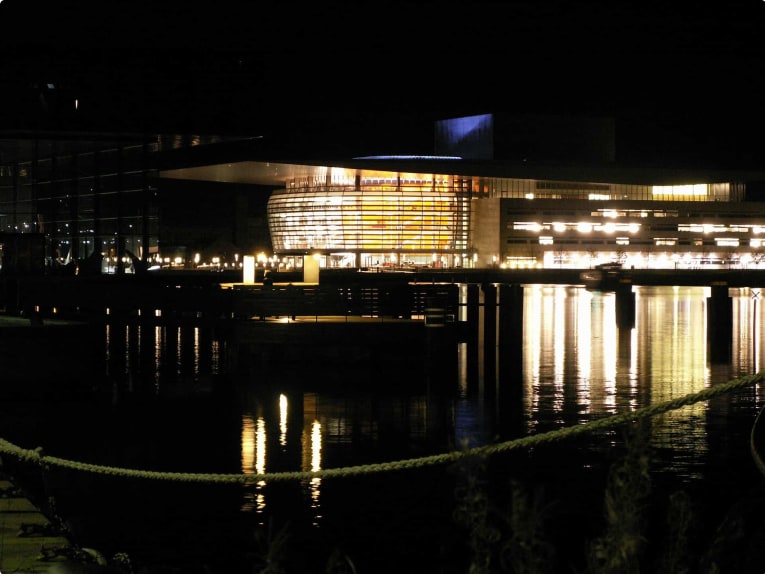
If you’re interested in seeing Amalienborg and delving into the fascinating history of the Danish Royal family, please take a look at our tours of Denmark. Both our Tour of Denmark and Scandinavia tour visit Amalienborg Palace and allow time to explore Amaliehaven as well.
Articles relating to Denmark published by Odyssey Traveller
- Discovering Scandinavia & Viking Denmark for tourists
- Questions About Denmark: The Definitive Guide for Travellers
- The Viking’s Woollen Sails Exploring the Faroe Islands: The Definitive Guide for Traveller
- Copenhagen’s Tivoli Gardens, Europe’s Magical Theme Park
For all the articles Odyssey Traveller has published for mature aged and senior travellers, click through on this link.
External articles to assist you on your visit to Denmark
Related Tours
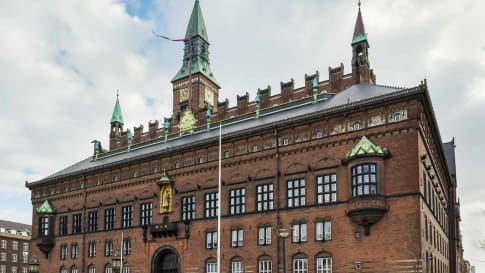
20 days
Aug, MayTour of Denmark's Culture & History
Visiting Denmark
Experience group travel for couples and single travellers to Denmark. This European tour provides a travel experience based around key destinations and itineraries that provide authentic experiences in Denmark .A single supplement applies for solo travellers.
From A$15,895 AUD
View Tour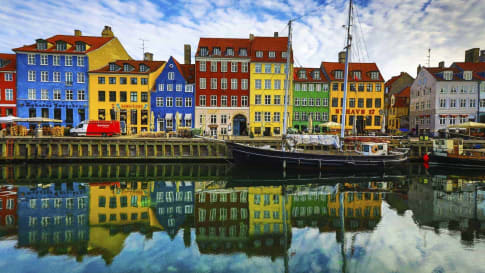
13 days
Jun, SepScandinavia tours for mature travellers
Visiting Denmark, Norway
Uncover on a small group tour for couples and solo travellers, a Viking past and view of the world’s biggest fjords on this journey through Scandinavia. In low-lying Denmark our small group journey takes us to visit the Zeeland, the sea land, and our program includes the vibrant capital of Copenhagen. In Norway we travel through endless forests, skirting great fjords to Bergen.
From A$14,995 AUD
View Tour
21 days
SepScandinavian Design Small Group Tour: Denmark, Sweden and Finland
Visiting Denmark, Finland
Denmark, Sweden and Finland realised that the only way to remain competitive on the world stage was through the value of superior design. Travelling with like-minded people on our small group tour you will explore the cities and towns where those high quality products, appreciated around the world, are created including hygge.
From A$16,685 AUD
View Tour
40 days
MayArctic circle tour
Visiting Denmark, Finland
A 40 day small group tour for senior couples and mature solo travellers interested in exploring the Arctic circle. The group with a program leader explores Greenland, Iceland, Faroe Islands of Denmark, Norway, Sweden and Finland. The tour makes use of the long summer night light for your enjoyment learning about viking history and trade and the Sami.
From A$44,995 AUD
View Tour